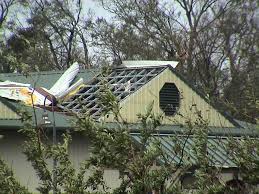 Despite its name, dry rot does not occur without the presence of moisture. Dry rot, which causes wood to become soft and deteriorate, is caused by a combination of moisture and an aggressive type of fungus. It is referred to as “dry” because it does not affect living trees or uncured wood; it affects lumber that is dried and cured for use in construction. Although roofing shingles and shakes made from wood can suffer from dry rot, it is more commonly found on wood siding. In Austin, Dry Rot & Siding Concerns should be addresed.
Despite its name, dry rot does not occur without the presence of moisture. Dry rot, which causes wood to become soft and deteriorate, is caused by a combination of moisture and an aggressive type of fungus. It is referred to as “dry” because it does not affect living trees or uncured wood; it affects lumber that is dried and cured for use in construction. Although roofing shingles and shakes made from wood can suffer from dry rot, it is more commonly found on wood siding. In Austin, Dry Rot & Siding Concerns should be addresed.
Dry Rot & Siding Concerns – How Dry Rot Occurs
For dry rot to occur, moisture needs to be in contact with a wooden surface for a lengthy period. Therefore, it will not occur from a one-time incident that is quickly remedied, but a plumbing leak or a roof leak that goes undiscovered for an extended period can allow dry rot to set in. Things that trap water against the siding — such as an accumulation of leaves or debris — or that allow the wood to soak up water — such as siding with neglected paint — can make it easier for dry rot to occur.
Dry Rot & Siding Concerns – Typical Areas Susceptible to Dry Rot
Any area that regularly exposes wood to moisture can suffer from dry rot. However, certain areas are more susceptible. These include:
• Areas around exterior doors and windows
• Porches and decks
• Joints sealed with caulking
• Exterior trim
• Wood siding near the base of the structure
• Lumber atop a concrete foundation
• Areas around skylights on wood roofs
• Roof edges where gutters attach
Dry Rot & Siding Concerns – How to Identify Dry Rot
If the dry rot has progressed to the point that the rotted wood is visible, the main problem is identifying the depth of the wood affected by the rot. A screwdriver can be used to poke the wood to help determine the depth of the damage. However, in many instances, the rot is hidden beneath the siding. Here are some symptoms that may signify dry rot.
• The paint on the siding is bubbling.
• The siding feels soft and spongy.
• A musty smell may be noticeable near the affected wall both inside and outside.
• The wood siding is shrinking, which usually causes it to crack.
Dry Rot & Siding Concerns – Repairing Dry Rot
Repairing dry rot is not a suitable do-it-yourself project. It requires experience, special tools and skill. Repair methods can vary, but the standard procedure is as follows.
• Siding and other materials are removed to expose a sufficient area to determine the extent of the rot.
• Rotted wood is removed, which may require the contractor to install bracing first to make sure that the section remains secure.
• The wood around the rotted areas is treated with a fungicide.
• New siding is installed to replace the sections that were removed.
Alpha Roofing Industries is a roofing contractor, and if you suspect that you have dry rot, contact us. We have more than 30 years of industry experience. We offer a wide variety of siding and roofing services, including installation and repairs. If you are looking for roof replacements in Austin, we are here to help! We also repair chimneys and install skylights in Austin. Our crews work only for us and are committed to quality results and exceptional customer service. To request a free quote, you can either submit the online form or call (512) 777-1086.
